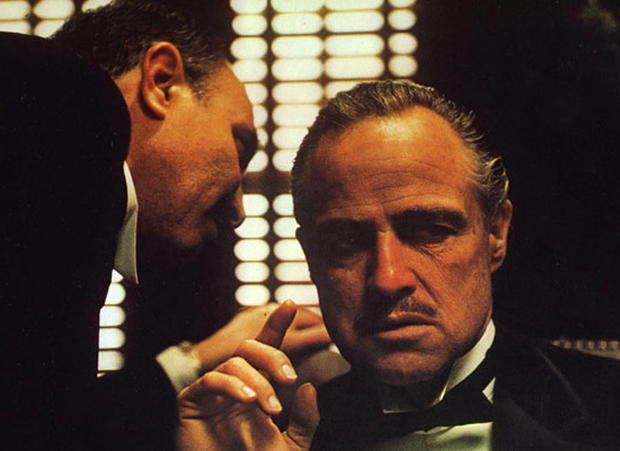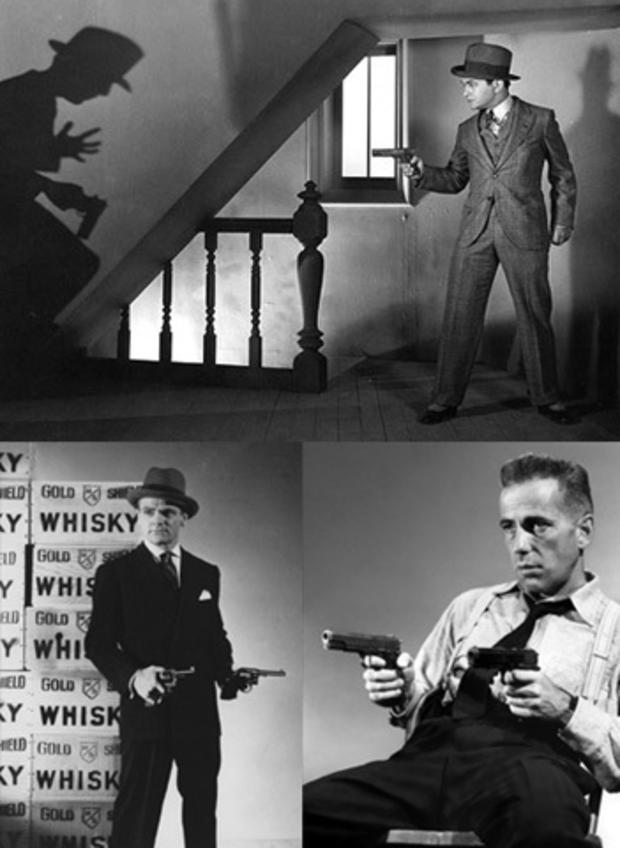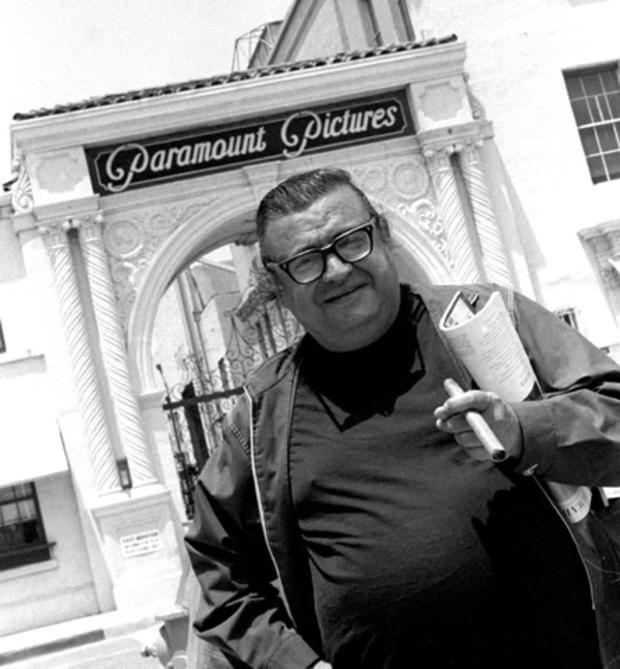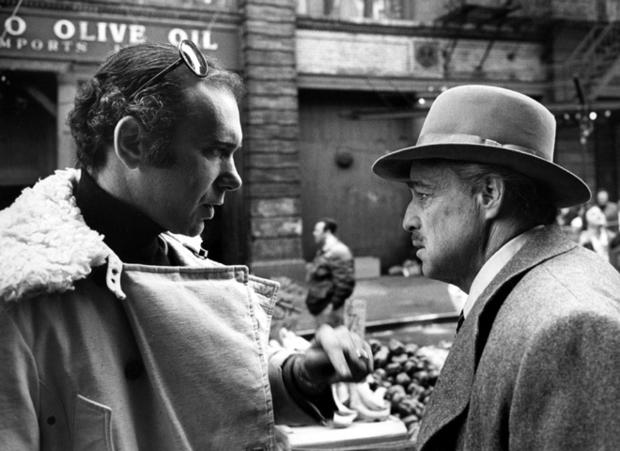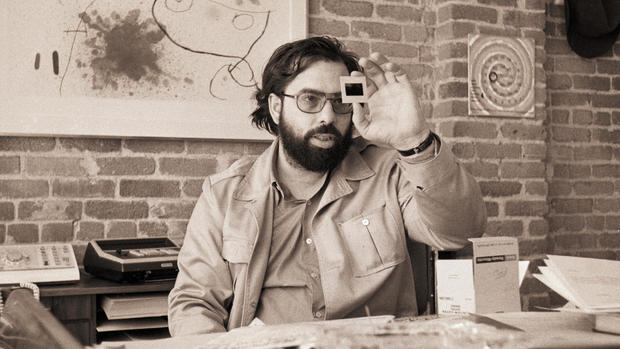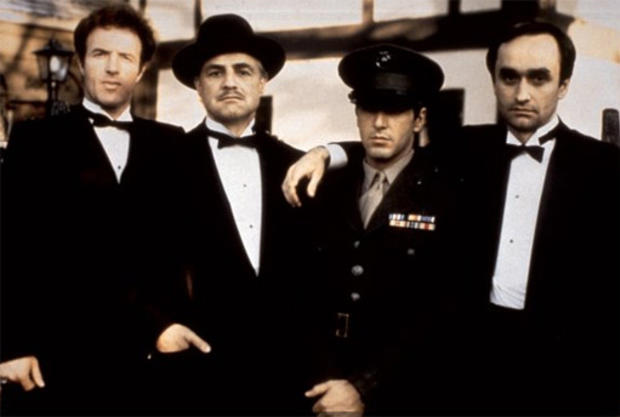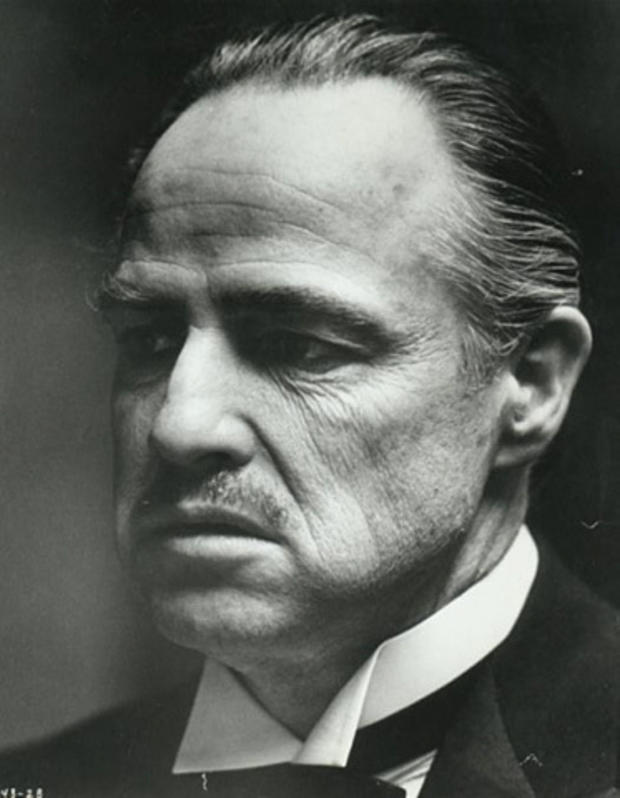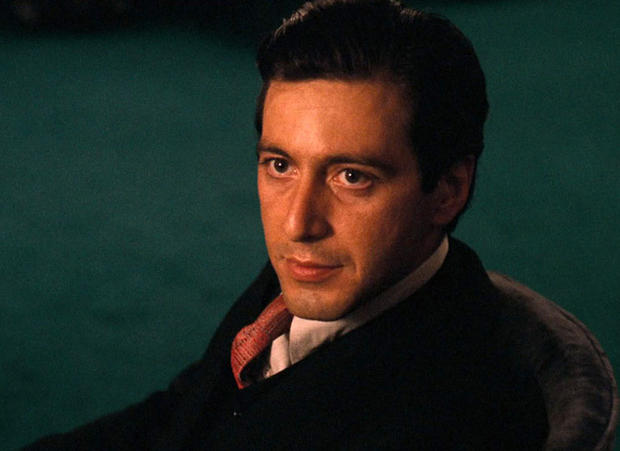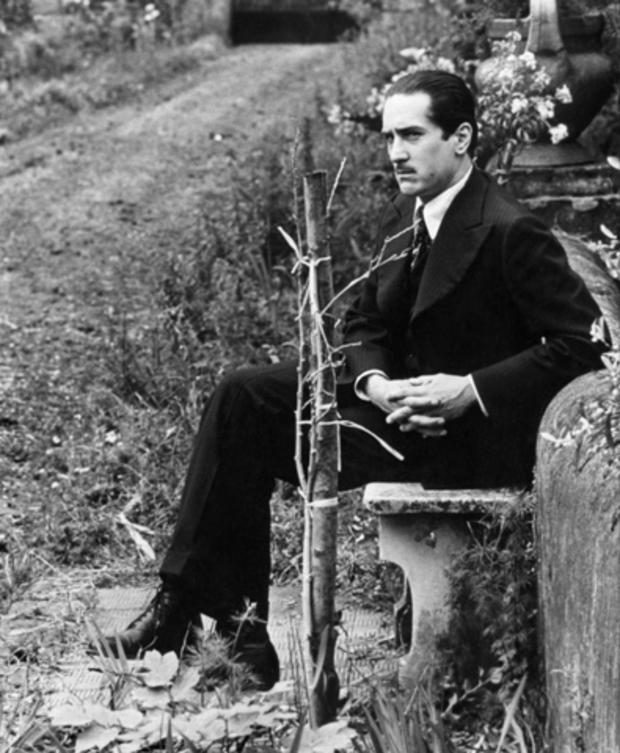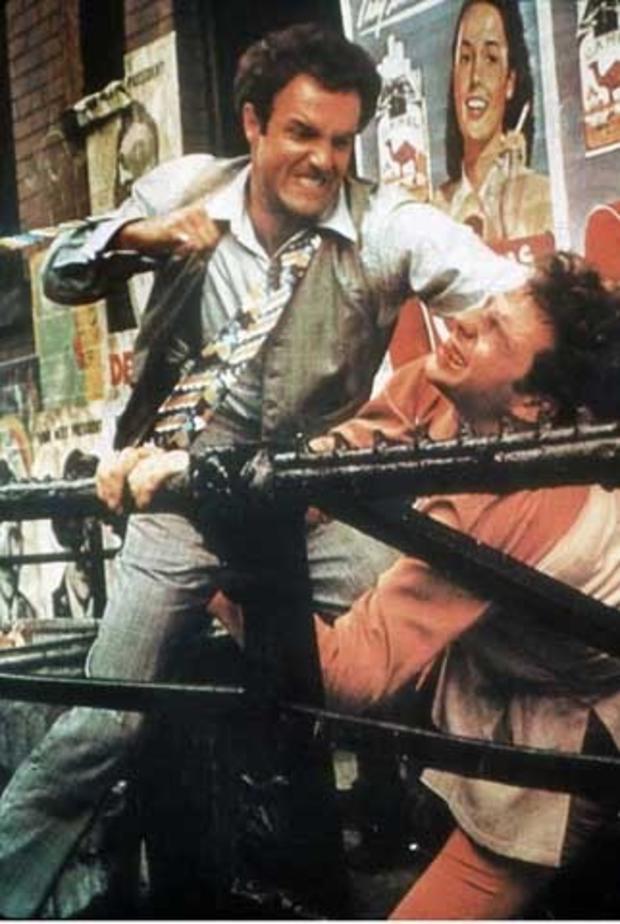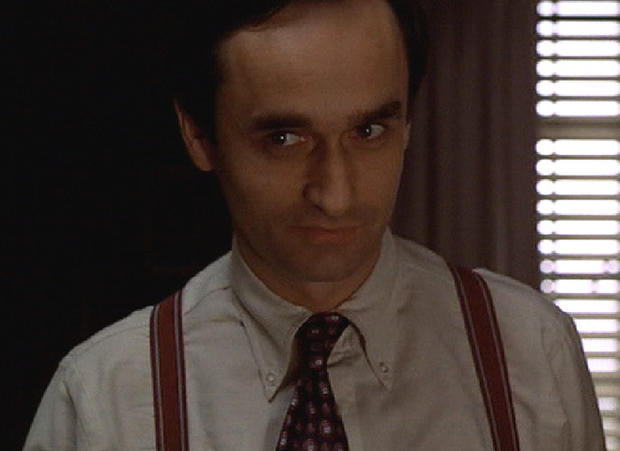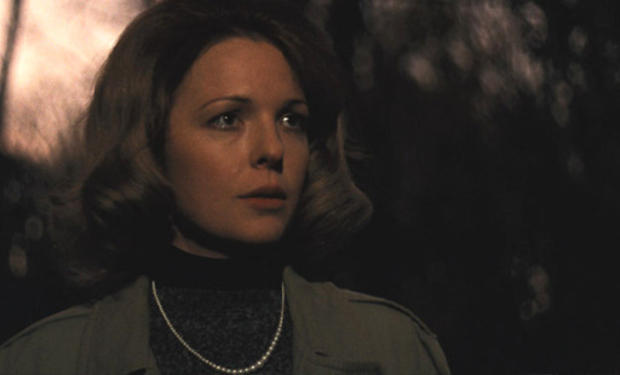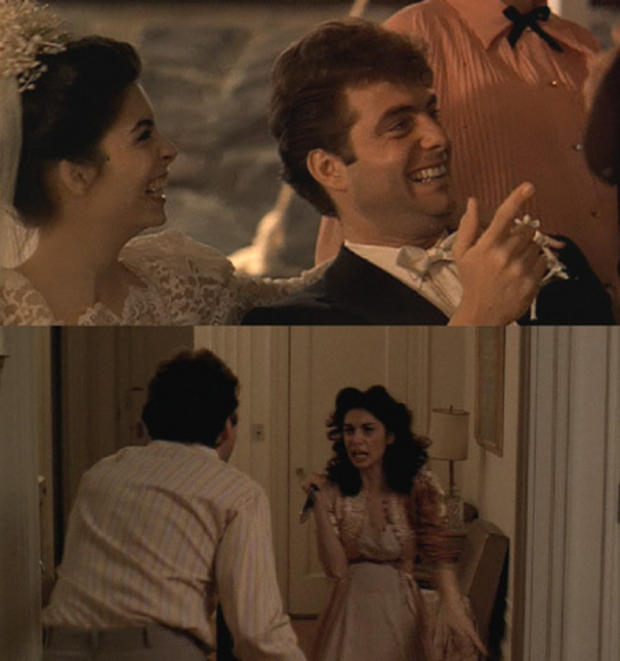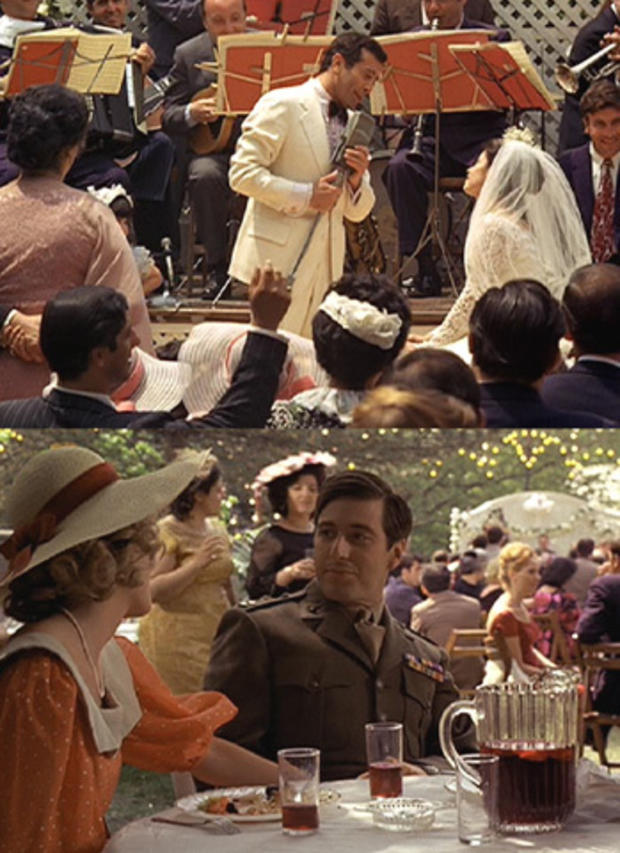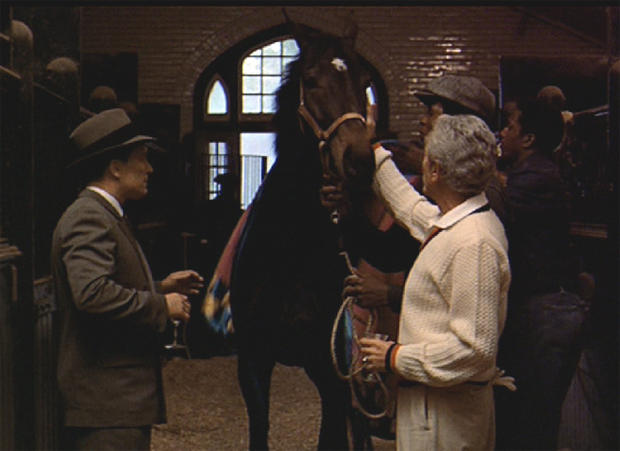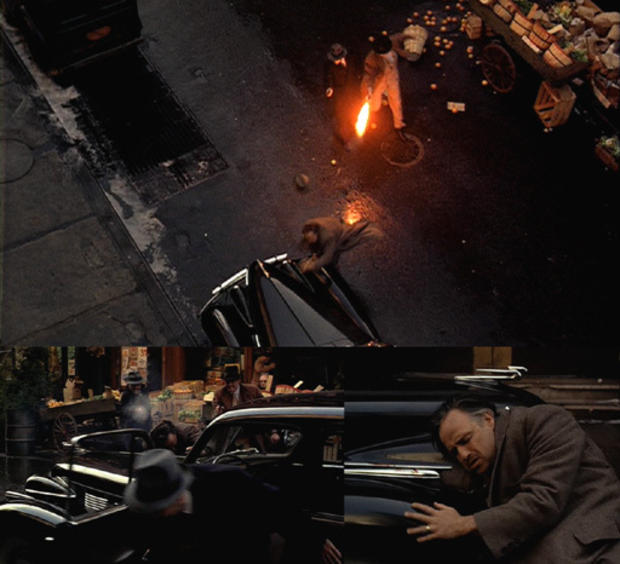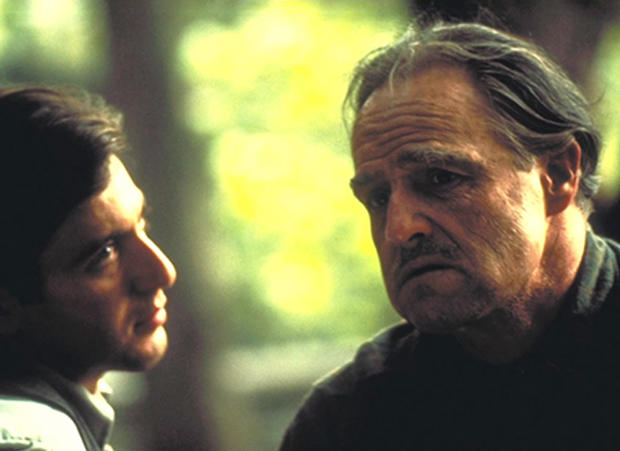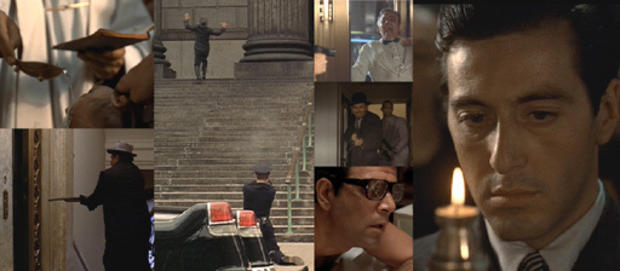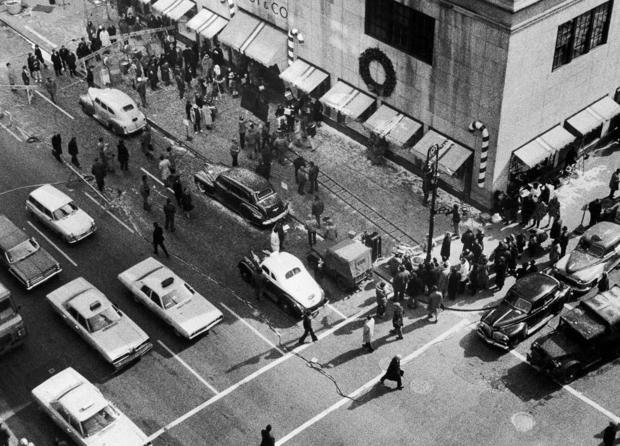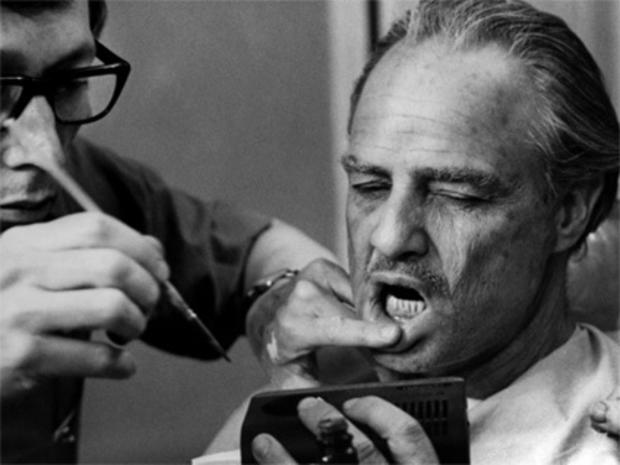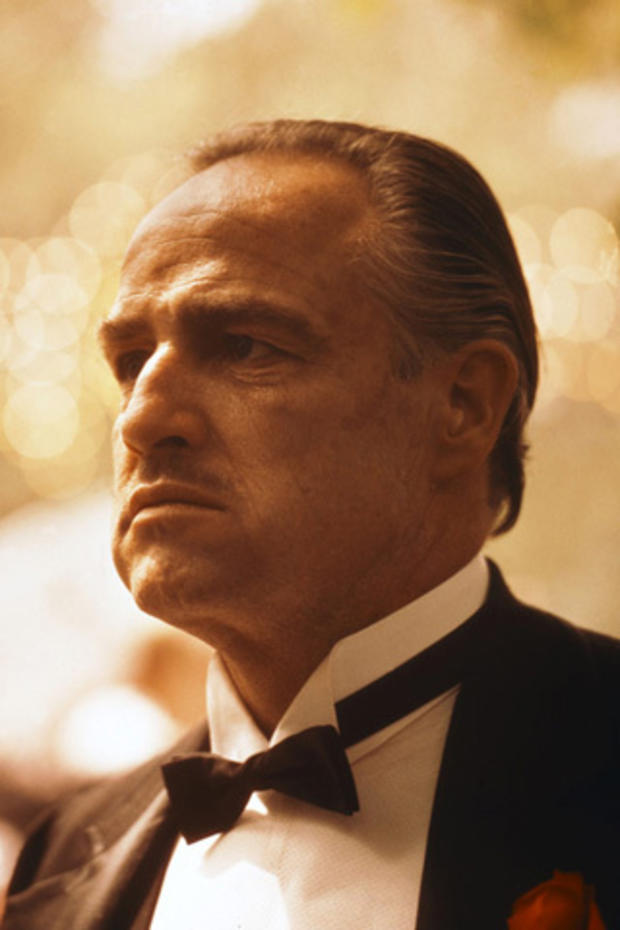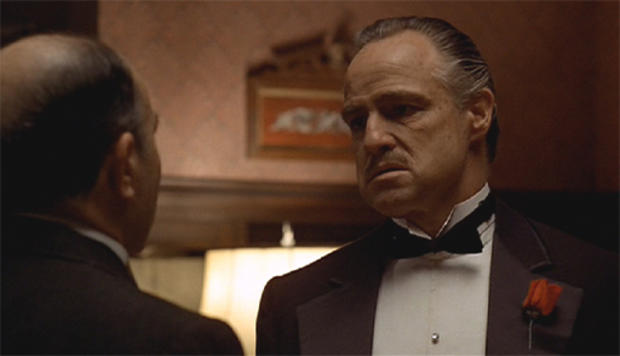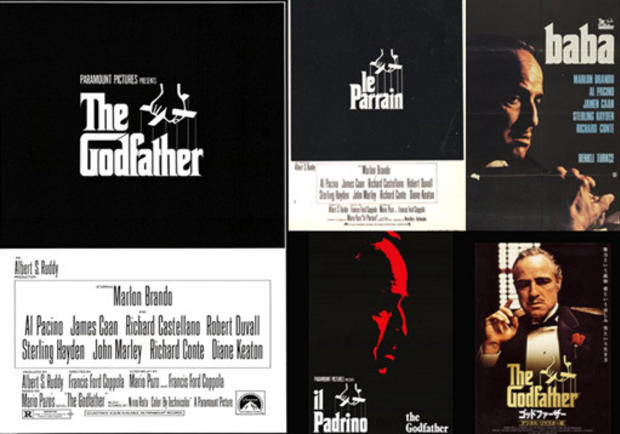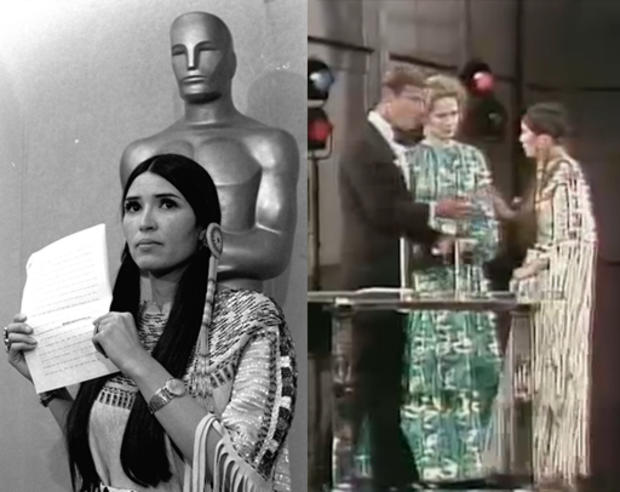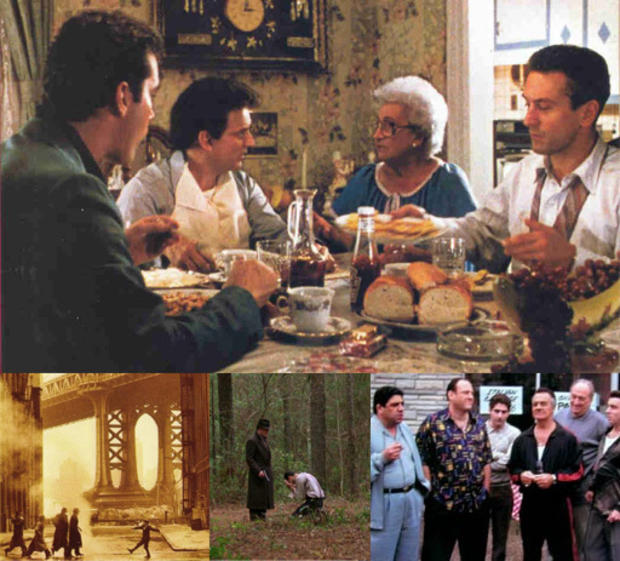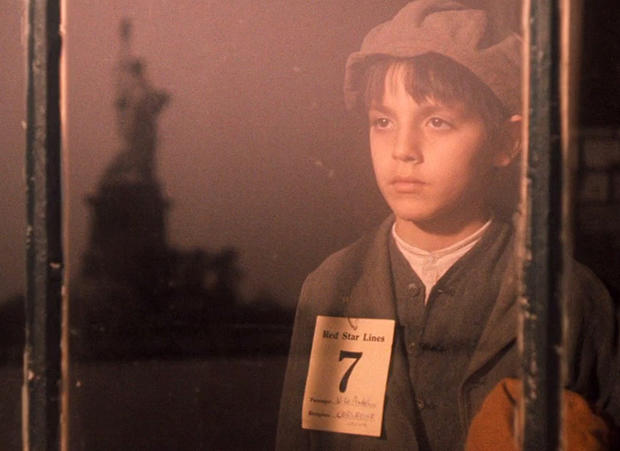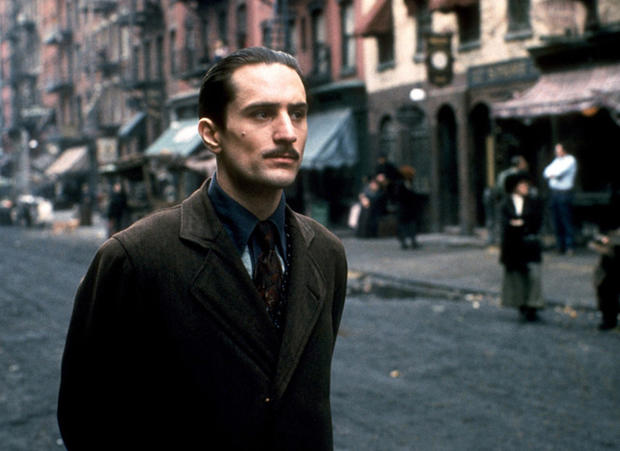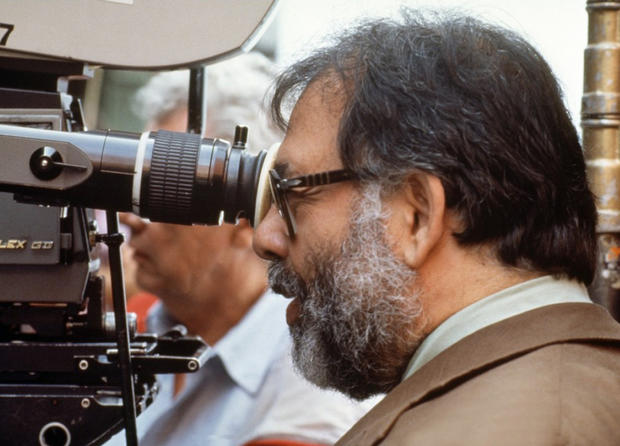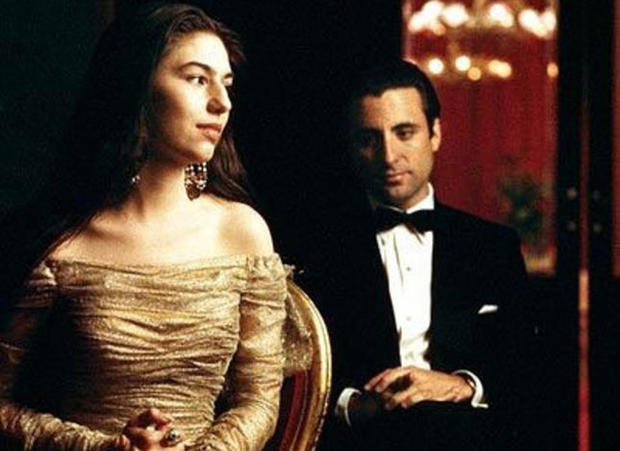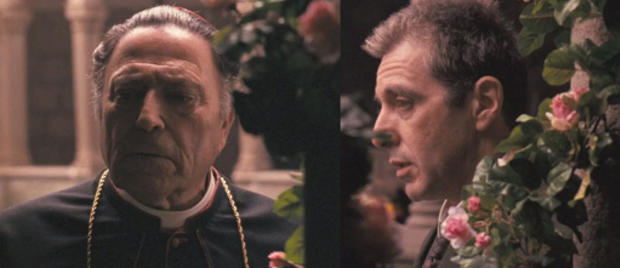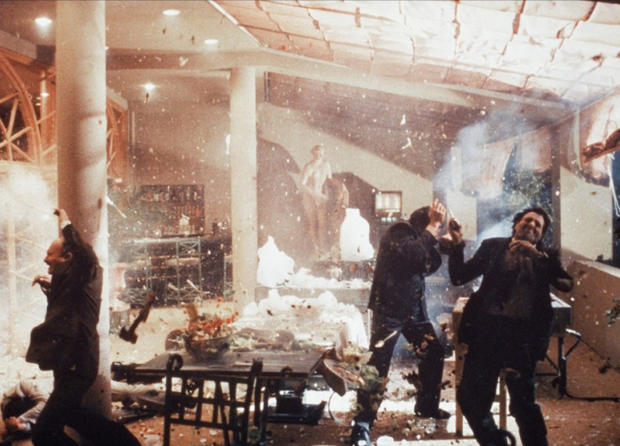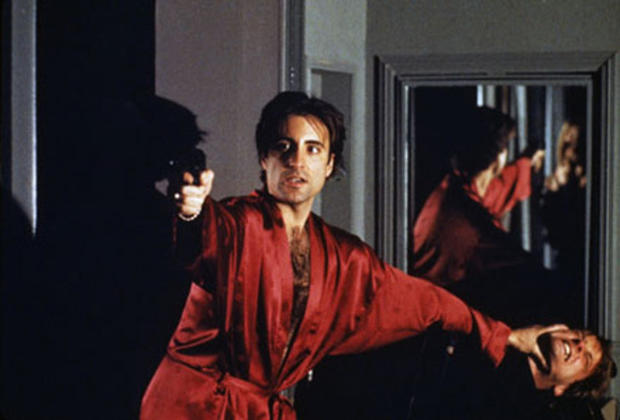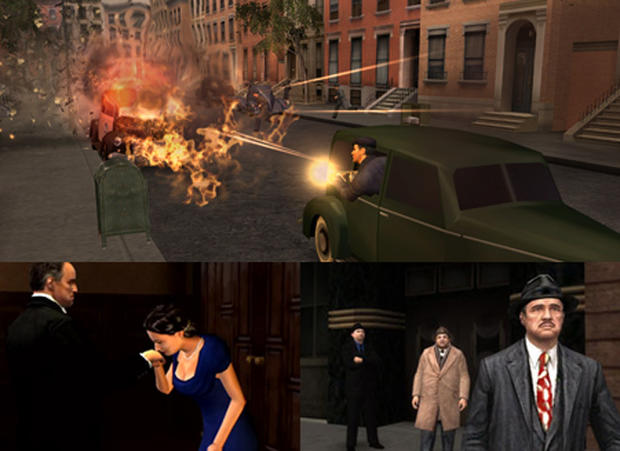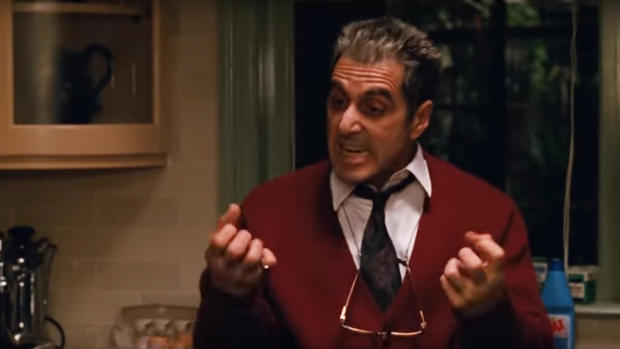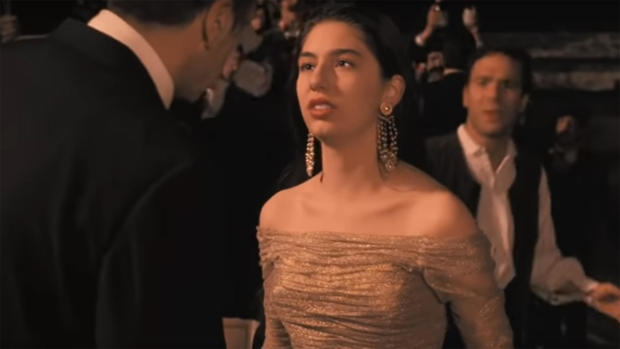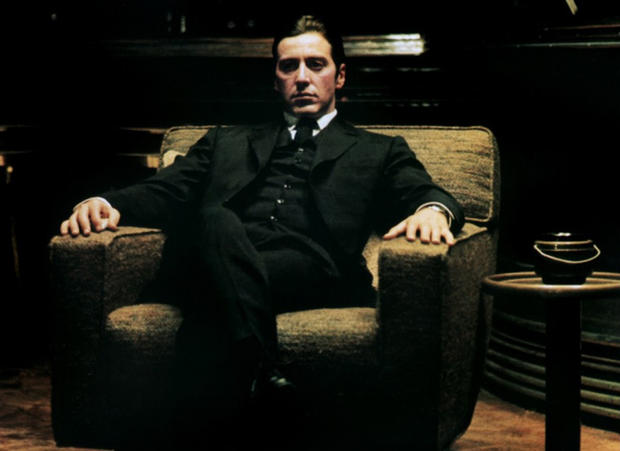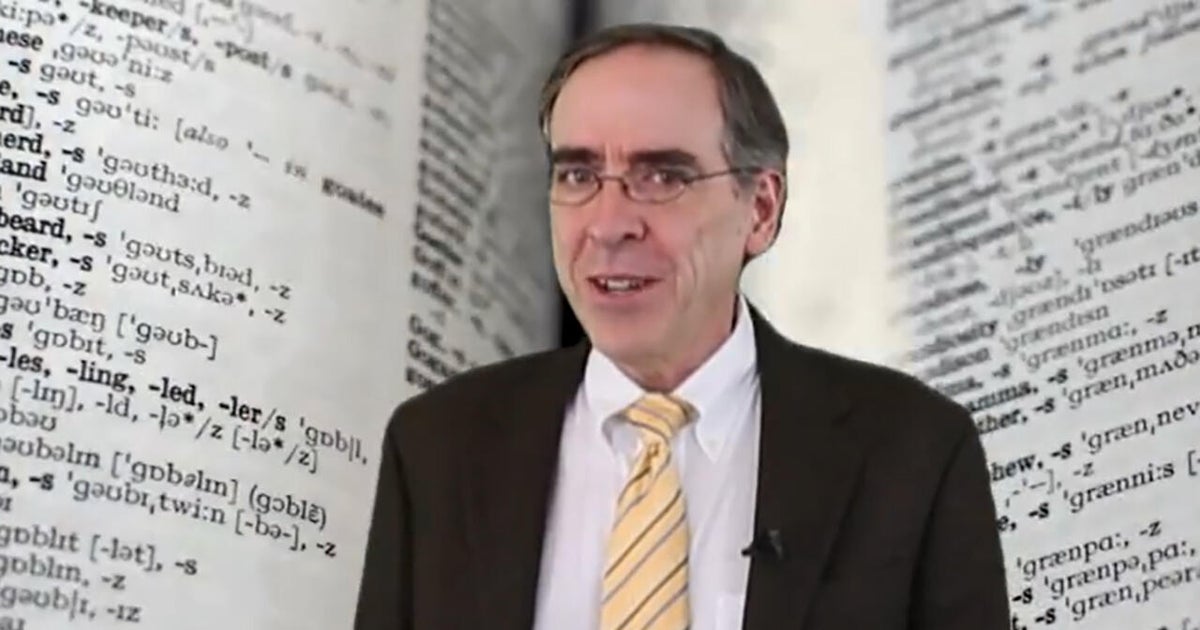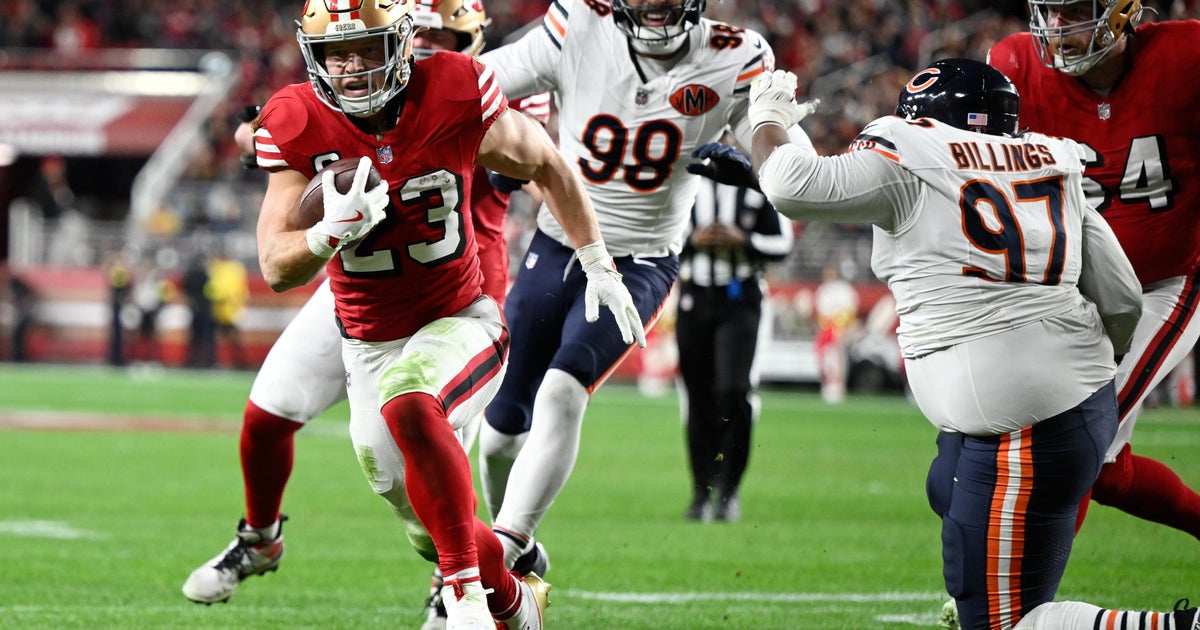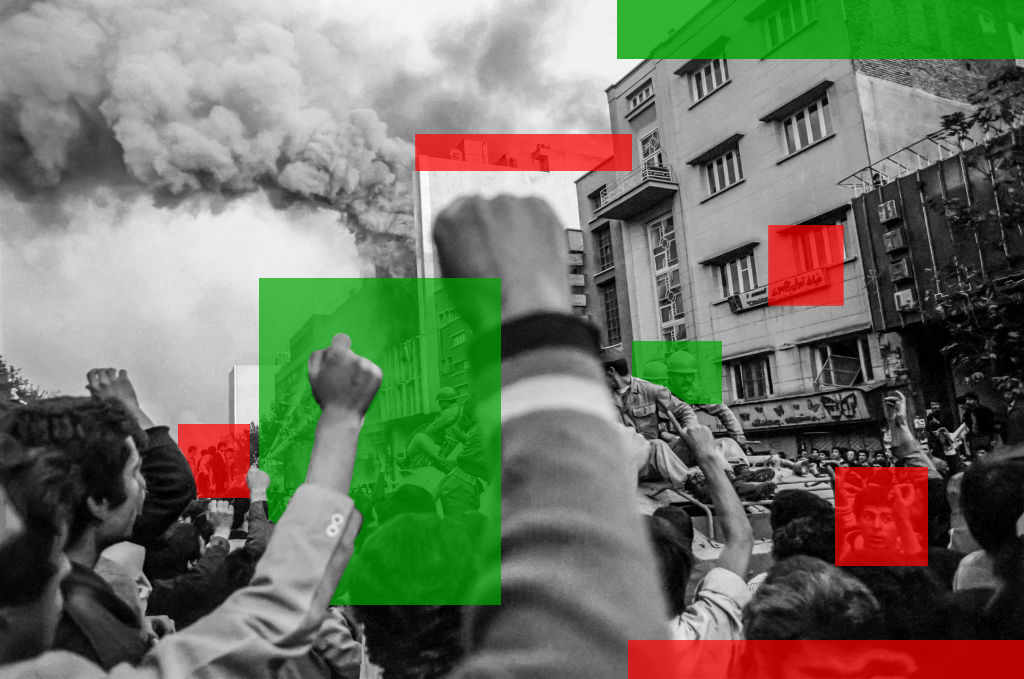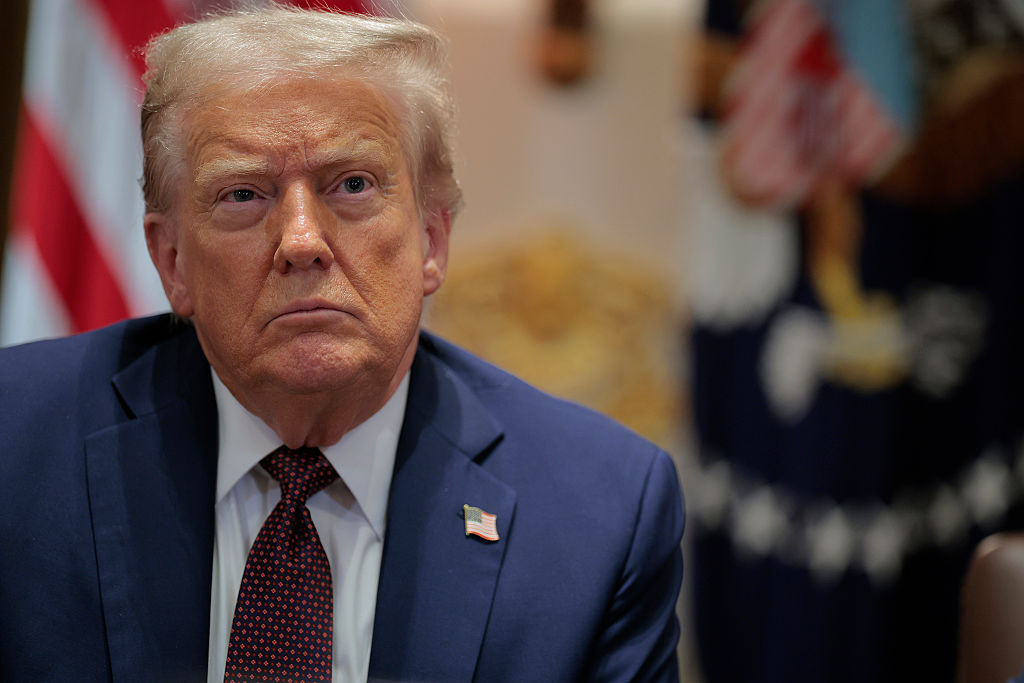"The Godfather": The 50th anniversary
A father passes down a legacy of power, corruption and violence to his sons, one of whom rejects those values, only to take control with a ruthless contempt in order to preserve the family business. It's a uniquely American story that weaves in elements of assimilation, loyalty, sibling rivalry and quest for power, with a heavy dose of bloodletting.
"The Godfather" is that rare motion picture that satisfies the visceral desire for sensational entertainment, the emotional need for affecting drama, and the intellectual drive for art. Born from a mass market potboiler about the Mafia by an author desperate to make a few bucks, the resulting film version is one of the great American films about family - brought to life with vivid direction and craftsmanship and some of the best actors ever to appear on screen.
Premiering fifty years ago, on March 14, 1972, the film opened to blockbuster business and became a landmark, inspiring two film sequels, imitations, book sequels, a computer game, parodies, and more cultural references and quotable dialogue than nearly any movie of the last half-century.
Hollywood Heavies
Gangster films have been a staple of movie houses since Wallace McCutcheon's 1906 crime film "The Black Hand." As Prohibition helped give rise to such real-life mob figures as Al Capone, Bugsy Siegel and Meyer Lansky, Hollywood studio films of the 1930s, '40s and '50s starring James Cagney ("The Roaring Twenties"), Edward G. Robinson ("Little Caesar"), and Humphrey Bogart ("High Sierra") celebrated the brash bravado of mobsters, elevating the characters as American icons even as they fell to their deaths in a desperate grab at power and fortune.
In the post-WWII years, criminal organizations (whether referred to as the Mafia, La Cosa Nostra, or just "underworld") stretched their tentacles into more and more areas of American life. Yet the movies' romantic vision of the Tommy Gun-toting gangster held a tremendous grip on the public, fueled by the tabloids' heralding of their violent ends.
Mario Puzo
It was subject matter that attracted novelist Mario Puzo. Sample chapters of Puzo's book, originally titled "Mafia," drew the attention of Paramount Pictures, which obtained film rights even before the book was published in 1969. Their prescience was proved correct: "The Godfather" was on the bestseller lists for over a year, and in its first two years sold more than 9,000,000 copies (combined hardcover and paperback).
Despite the book's success, the studio was wary of a film version: Paramount's previous movie about the Mafia, the 1968 Kirk Douglas drama "The Organization," was a box office bomb. The studio had also suffered big-budget disasters in 1969 and 1970 (including "Darling Lili," "Paint Your Wagon" and "Waterloo"), and was averse to another risky, big-budget adventure. Studio execs went forward only on assurances that it could be done cheaply.
Albert Ruddy
Albert Ruddy, producer of the modestly-budgeted Robert Redford film "Little Fauss and Big Halsey," convinced the head of the studio that "The Godfather" could be done inexpensively. His sales pitch: "I want to make an ice-blue terrifying movie about people you love."
But could the film even be made? The Italian-American Civil Rights League protested that "The Godfather" would stereotype Italian-Americans, and in Spring 1970 held a rally at Madison Square Garden, raising $600,000 in a bid to prevent the film from going into production. Ruddy received threatening phone calls, and the window of his car was shot out.
Real-Life Mobster
Ruddy attended a meeting with hundreds of League members, assured crime figure Joe Colombo that the words "Mafia" and "Cosa Nostra" would not be used, and won over the crowd by intimating that certain members of the audience might appear in the film as bit players or extras.
The mob threat was quelled, but media reports that a "deal" had been made sent the stock price of Gulf + Western, Paramount's parent company, in a spin.
The League's influence was largely reduced before the film opened, for on June 28, 1971, Colombo was attending an Italian Unity Day rally in Columbus Circle when he was shot three times in the head. The mob boss was paralyzed, and lingered for years before dying in 1978. The assailant didn't leave Columbus Circle alive.
Francis Ford Coppola
Finding a director for "The Godfather" was another challenge. Several veteran filmmakers, including Arthur Penn ("Bonnie and Clyde"), Sergio Leone ("One Upon a Time in the West"), Peter Yates ("Bullitt"), Otto Preminger ("Laura"), Richard Brooks ("The Professionals"), Franklin J. Schaffner ("Patton"), and Greek director Costa Gavras (the 1969 Oscar-winner "Z"), turned it down, either for reasons of scheduling or a distaste with the source material.
Francis Coppola, a graduate of Roger Corman's low-budget film studio and co-author of the screenplay for the 1970 George C. Scott bio "Patton," had only one big studio feature directing credit (the Fred Astaire musical "Finian's Rainbow," which bombed), but was promoted for the job by the number two executive at Paramount, Peter Bart. Initially turned off by the material, Coppola was convinced by family and friends (including George Lucas) to take the job, in order to make the money necessary to keep Coppola's production company, American Zoetrope, afloat.
The Corleones
Coppola accepted on the condition that he make the film a family chronicle, not an exposé of gangsters. He worked with Puzo to revise the novelist's draft screenplay, expanding the narrative as a tale of a "king" and sons jostling for control of his empire.
Puzo and Coppola's final script of "The Godfather" pared down the source novel's plot to its essentials, while expanding on the familial ties that lent a greater sense of tragedy to the development of son Michael Corleone.
Marlon Brando
As crucial as a choice of director was the casting. Coppola from the start pushed for Marlon Brando as Don Corleone, but the studio resisted, given Brando's reputation for difficulty and the box office failure of his previous film, "Burn." Other names were floated: Ernest Borgnine, Anthony Quinn, and Italian producer (and husband of Sophia Loren) Carlo Ponti.
Brando was interested, and agreed to a videotaped tryout in character. Using shoe polish to darken his hair and some Kleenex in his cheeks, Brando "aged" two decades and became a figure exuding charisma and corruptive power. Shown anonymously among the auditions of other actors, studio execs were amazed at the performance - and further amazed to learn who it actually was. Brando got the part.
Al Pacino
Like Brando, Al Pacino also faced resistance from the studio. The young actor had just filmed "Panic in Needle Park," and had won an Obie Award for "The Indian Wants the Bronx." It was his Tony Award-winning performance in "Does a Tiger Wear a Necktie?" which convinced Coppola that he was right for the part of Michael Corleone, although his screen tests left the top brass cool. His brooding persona wasn't a big enough sell.
Coppola and Ruddy went through protracted negotiations to convince studio head Bob Evans to accept Pacino for the role - and then learned that Pacino's contract to appear in MGM's "The Gang That Couldn't Shoot Straight" would be a conflict. The two studios settled, and Pacino was signed less than three weeks before shooting began.
Robert De Niro
A curious piece of trivia: Robert De Niro had auditioned for the role of Sonny Corleone, and was hired to play "button man" Paulie Gatto, but he asked to be let out of his contract when Pacino's role in "The Gang That Couldn't Shoot Straight" became available.
By not playing the character in "The Godfather," De Niro was free to take the role of the young Vito Corleone in the sequel, "The Godfather Part II" (a performance for which he won an Academy Award).
James Caan
A classmate of Coppola's from Hofstra University, James Caan had extensive TV credits in the early '60s before appearing in "Lady in a Cage," "El Dorado," "Countdown" and "Rabbit Run." He starred in Coppola's "The Rain People" along with Robert Duvall and Shirley Knight, but his biggest splash was as football player Brian Piccolo in the 1971 TV movie "Brian's Song."
Though Caan's German-Jewish heritage was a far cry from Santino Corleone's Sicilian roots, he captured Sonny's explosive energy, propensity for violence, and self-destructiveness.
Robert Duvall
Since his feature film debut as Boo Radley in "To Kill a Mockingbird," Robert Duvall (Tom Hagen) had built an impressive roster of TV appearances (including "The Twilight Zone," "Naked City," "Route 66," "The Fugitive" and "Combat!") and feature films ("The Chase," "Countdown," "Bullitt," "True Grit," "The Rain People" and "THX 1138").
Duvall's best-known role up to that point was as Maj. Frank Burns in Robert Altman's "MASH."
John Cazale
John Cazale (Fredo Corleone) had won Obie Awards for Israel Horovitz's "The Indian Wants the Bronx" and "Line." "The Godfather" was his first film.
Diane Keaton
Diane Keaton had appeared on Broadway in "Hair" and Woody Allen's "Play It Again, Sam"; in commercials and TV series (including "Love, American Style," "Rod Serling's Night Gallery" and "Mannix"); and had a small part in "Lovers and Other Strangers." She was cast as Michael's girlfriend Kay in "The Godfather," then repeated the role in the crime saga's two sequels.
Talia Shire and Gianni Russo
Coppola didn't have to look far for the role of Connie Corleone: His sister, Talia Shire ("The Dunwich Horror"). But the casting process was opened to actors and non-actors alike, and pleas for auditions came from all directions. The studio issued a warning about scam operations which promised clients to get audition tapes into the hands of the producers.
To play Carlo, husband of Connie Corleone, Las Vegas emcee Gianni Russo demanded a screen test, in which he acted out the attack on Connie upon the studio president's secretary. Though not injured, her "beating" was realistic enough to win Russo the part.
Richard Castellano
The highest-paid actor on "The Godfather," in terms of straight salary, was Richard Castellano, who played the enforcer Clemenza. He had received Tony and Oscar nominations for his performance in "Lovers and Other Strangers."
When "The Godfather Part II" was being cast, Castellano's salary demands were deemed too high, so his character was "bumped off," replaced by the character Frankie Pentagelli (Michael V. Gazzo).
Another trivia note: Playing the Young Clemenza in the sequel's flashback scenes was Bruno Kirby, who played Castellano's son in the TV comedy series "The Super."
"I believe in America."
The film opens on the wedding day of the daughter of Don Vito Corleone. While many come to his New York home to pay their respects, some come seeking favors, such as the funeral director Bonasera (Salvatore Corsitto). He asks that the men who beat and tried to rape his daughter be killed, after he failed to acquire justice from the judicial system.
Corleone agrees to exact a vengeance, but not death. "We're not murderers," he professes.
Father and Son
Despite the claim "We're not murderers," humility and reticence are not characteristics of the Corleone family, whose business is vice (gambling, liquor, prostitution), and whose favorite weapon is political power (judges and politicians on their payroll). They maintain their position by wielding a terrible vengeance against those who cross their path. And yes, they are known to blow someone's brains out, if it's felt they are deserving.
But the story of "The Godfather" is less concerned with underworld commerce - it is barely mentioned. Instead the plot follows the family's attempts to protect their honor when it is attacked or threatened (from outside and within), and how a father's best efforts to isolate and protect one son from the family business fail utterly.
"An Offer You Can't Refuse"
Returning home from a stint in the Army, the college-educated Michael seems headed for a different path. He convinces his girlfriend that the most notorious tales of the Corleones do not define him, as he describes the death threat used to convince a band leader to tear up the contract of a favored singer. "That's my family, Kay," he says. "That's not me."
Khartoum
We see to what lengths Don Corleone will go to assert his demands, and to punish those who disobey.
When Hollywood studio head Jack Woltz (John Marley) refuses to give a choice film role to Corleone's favorite, the producer discovers the dismembered head of his prized horse Khartoum.
Assassination Attempt
Gunmen attack Vito Corleone in Little Italy. Though the Don survives, the assassination attempt sparks retaliation and fears of a brutal mob war.
Vengeance
Afraid that his brother Sonny's reaction to the attempt on his father's life will start an all-out war that could destroy the Corleone family, Michael volunteers to kill the head of an opposing family and the police captain whose protection he has bought.
Despite denials that he will not follow in the violent path of his father, Michael crosses the line, and becomes a hunted man.
Father and Son
Don Corleone speaks of his regrets, and of the plans he had for Michael:
DON CORLEONE: I knew that Santino was going to have to go through all this. And Fredo, well, Fredo was ... well ... But I never, I never wanted this for you. I work my whole life, I don't apologize, to take care of my family, and I refused to be a fool dancing on a string held by all those big shots. I don't apologize - that's my life. But I thought that, that when it was your time, that, that you would be the one to hold the strings. Senator Corleone. Governor Corleone. Something. ... Just wasn't enough time, Michael, Wasn't enough time.
MICHAEL: We'll get there, Pop. We'll get there.
Murders
In a bravura example of editing, a scene of the baptism of Michael's nephew (for whom he is godfather) is intercut with shots of the heads of competing crime families being hunted down and killed, on Michael's orders. It is Coppola at his most operatic.
Kissing the Ring
KAY: I thought you weren't going to become a man like your father. That's what you told me.
MICHAEL: My father's no different from any other powerful man. . . . Any man who's responsible for other people - like a senator or a president.
KAY: You know how naive you sound?
MICHAEL: Why?
KAY: Senators and presidents don't have men killed.
MICHAEL: Oh, who's being naive, Kay? My father's way of doing things is over, it's finished. Even he knows that. I mean, in five years the Corleone family is gonna be completely legitimate. Trust me. That's all I can tell you about my business.
Production
Filming began in March 1971, at locations in New York City, New Jersey, Long Island, Las Vegas and Los Angeles, before moving to Sicily. With the League offering no resistance, some of the "boys" hung out on the set to observe filming (James Caan picked up many pointers as he joined them for drinks). The League even helped convince a balking landowner to allow filming at the location used for the Corleone family compound.
Pictured: A view of the film crew shooting "The Godfather" on Fifth Avenue in New York City on Tuesday, March 24, 1971. Old cars used for the 1945 period setting can be seen as modern-day New York traffic moved past beyond camera range.
Makeup
Dick Smith applies his makeup design to Marlon Brando. The actor was in his mid-40s when he played the aging Don Corleone. For the film, Smith thinned and colored Brando's hair, used old-age stipple (a gum that tightens the skin, creating realistic wrinkles), teeth discoloration, and dental plumpers that fit between Brando's lower teeth and cheeks.
Don Corleone
Marlon Brando as Don Vito Corleone.
Shooting
From the start of shooting there was anxiety and apprehension among the cast and crew. Pacino was convinced he would be fired. While that was not likely to happen, his twisted ankle (earned while jumping onto a car bumper in a getaway attempt) forced scheduling changes. Brando missed a plane from Los Angeles - and his first day before the cameras. Shooting kept falling behind. And grumbling from members of the production team and studio execs about the quality of the dailies (Too dark! You can't see their eyes!) led Coppola to fear that he would be fired. (Sitting in a men's room stall Coppola even overhead some crew members discuss the possibility of replacing the director.)
Credible talk that Elia Kazan (who'd directed Brando in "A Streetcar Named Desire," "Viva Zapata!" and "On the Waterfront") would be brought in were quelled by Brando himself, who told Coppola that he'd walk off the picture in solidarity if the studio fired him.
Coppola preemptively fired several staffers, including an editor who was wrangling to take over directing duties. And as the studio saw more and more dailies, they grew less concerned.
Tip o' the Hat
Marlon Brando accepts the applause of onlookers while filming "The Godfather" on Mott Street in Little Italy.
Special Effects
Not all the bloodletting went smoothly on "The Godfather": Due to a technical snafu on the first take of the toll booth attack on Sonny Corleone (James Caan), the numerous tiny "blister" appliances which contained cavities filled with blood (to be ripped open with monofilament threads) to simulate bullet hits had to be abandoned because of the time needed to prepare them for a second take as they were losing daylight.
So while Sonny dies in a monumental hail of gunfire that rips him and his car to shreds - about 80 hits on Caan's body alone - no bullet hits are actually seen on his face. (Dick Smith applied some blood after the fact.)
"Gallons of Blood"
Makeup artist Dick Smith described Coppola's propensity for spontaneity: "Things were kind of winged as we went along. There were certain things that would come up like last minute ... like when they attempted to assassinate Brando in 'Godfather I' and he's lying in the gutter, Francis told me the morning we arrived, he was shooting, he wanted a couple of gallons of blood in the gutter. 'Francis,' I said, 'I wish you'd let me know; I don't carry around, you know, gallons of blood.' You didn't do it in those days - you had a little bottle. So we had to scrounge around, send runners off to find Karo syrup and food color and stuff like that and make up enough blood for the scene."
World Premiere
Pictured: Al Pacino and Jill Clayburgh attend the March 14, 1972 world premiere screening of "The Godfather" in New York City.
Pacino and Clayburgh had met while appearing at the Charles Playhouse in Boston in 1966 and were a couple for several years. The two made their TV acting debuts together in a 1968 episode of the series "N.Y.P.D.," playing a young couple attacked by a gunman.
In 2010 Lily Rabe, the daughter of Clayburgh and playwright David Rabe, appeared on Broadway with Pacino in "The Merchant of Venice."
Wedding
Coppola's masterful direction of the tragic story elevated what in another's hands would have been a gruesome tale of underworld figures. Audiences were moved by the familial ties that were tested or torn, while the film's examination of the corrupting influence of power and clashes of ethnicity presented a vivid depiction of an American Dream gone sour.
Maverick directors had already launched broadsides at traditional Hollywood filmmaking in the late 1960s and early '70s with such films as "Easy Rider," "MASH," and "The Last Picture Show." But "The Godfather" truly ushered in a new era of moviemaking - breaking rules of storytelling, cinematography and editing; unleashing a new generation of talented actors; and making auteur directors like Coppola the new kings of Hollywood.
Foreign Releases
"The Godfather" was the first film to gross more than $100 million at the domestic box office (and it pulled in about that much internationally as well). Adjusted for inflation, its U.S. box office was the equivalent of two-thirds of a billion dollars today.
The film was nominated for 10 Academy Awards and won three, including Best Picture.
Academy Awards
Sacheen Littlefeather, wearing Native American Indian clothing, appears at the Academy Awards ceremony in Los Angeles in 1973 to announce that Marlon Brando was refusing to accept his Oscar, won for his performance in "The Godfather." She declined the statuette offered by Roger Moore and Liv Ullman.
Brando wished to protest Hollywood's treatment of Native Americans and the massacre at Wounded Knee, but felt his presence would overshadow his message, so he opted for a proxy.
It was later revealed that Littlefeather was an actress (born Marie Cruz) whose father's heritage was White Mountain Apache and Yaqui. Littlefeather had participated in the occupation of Alcatraz Island, and later acted in the films "The Trial of Billy Jack" and "Winterhawk."
Post-"Godfather"
"The Godfather"'s influence was felt in other dramatic depictions of the underworld, most notably in Martin Scorsese's "Goodfellas"; Sergio Leone's epic, "Once Upon a Time in America"; the Coen Brothers' "Miller's Crossing"; and the hit TV series "The Sopranos."
Parody
"The Godfather" and its gangster flourishes were also routinely parodied. The most memorable was John Belushi (with a wicked Brando impression) portraying Don Corleone during a group therapy session on "Saturday Night Live," Jan. 10, 1976:
Sherry: You're hurting, Vito, and you're covering up.
Vito Corleone: Alright, alright, you're right. It is hurting me. Numbers alone, I'm losing fifteen to twenty grand a week.
Therapist: Vito, you're still blocking. How do you feel about them shooting Santino fifty-six times?
Vito Corleone: Terrible. We had to go to the mattresses. Tessio sleeps with the fishes. Johnny is through in Hollywood. They blew up Michael's wife and a lovely car. The Tattaglias, Barzinis, and Boyardees all have contracts out on me, the Feds are watching me, Kefauver is investigating me, and the ASPCA is after me over this horse thing.
Garrett: Evading. Vito's evading.
"The Freshman"
In 1990 Brando poked fun at his own creation in the Andrew Bergman comedy "The Freshman," in which he played a mafia boss suspiciously similar to a certain mafia Don.
In addition to Matthew Broderick, the cast included Bruno Kirby, who played the young Clemenza in "The Godfather Part II." Gianni Russo (Carlo) also made a cameo appearance.
"The Godfather Part II"
The young Vito Andolini (Oreste Baldini) arrives at Ellis island to a new life, and a new name - Vito Corleone - in "The Godfather Part II" (1974).
The film tells two parallel stories: One is of the young Vito, his rise to power, and his personal vendetta against the Sicilian capo who killed his family; the second is of Michael and his efforts to fight off both government investigations into his empire and attacks by other criminal syndicates. Both stories enrich the characters of the original film, and together the two films are viewed as the best gangster saga ever made.
When initially developing the sequel Coppola envisioned running both "I" and "II" together, with the new material wrapped around the original, but such a six-hour screening would be theatrically unfeasible. However, he revisited that notion when he re-cut the two films into a linear mini-series for network TV.
The Immigrant
Robert De Niro as Vito Corleone in "The Godfather Part II."
Brothers
John Cazale as Fredo Corleone and Al Pacino as Michael Corleone in "The Godfather Part II."
The film was nominated for 11 Academy Awards and won six, including Best Picture - the first sequel ever to be so honored. Francis Coppola also won for Best Director and shared Best Screenplay with Puzo. His father, Carmine Coppola, shared the Best Original Score Oscar with Nino Rota.
Francis Ford Coppola
After the success of "Part II," Paramount was eager for a third Corleone film, but Coppola backed off, preferring to develop other projects at his San Francisco-based studio, Zoetrope. Yet talk of a new "Godfather" was often revived, sometimes with names attached. (After he hit the big time with "Saturday Night Fever," John Travolta was mentioned as a possible cast member.) Money problems led to Coppola finally taking up Paramount's offer to revisit the Corleones.
Though a draft screenplay based on Puzo's story was first written in 1979 by Dean Riesner, almost none of that script carries through to the shooting script by Coppola and Puzo, in which the now-aged Michael Corleone seeks to legitimize his empire as the wolves surround him. Key to the story is Michael's search for redemption - and the suffering that both he and his loved ones undergo. As the director put it, Michael had to "pay for his sins." Paramount balked at the title - "The Death of Michael Corleone" - but the film went into production in New York and Rome in late 1989. Like Richard Castellano and "Part II," Robert Duvall did not appear owing to a salary dispute, so the character of Tom Hagen was killed off.
Sofia Coppola and Andy Garcia
As filming got underway at Cinecitta Studios in Rome, Winona Ryder, cast as Michael's daughter Mary, had to pull out for health reasons. Under the gun to fill the role quickly, Coppola brought in his daughter, Sofia. Though with limited acting experience, Sofia had appeared on screen from a very early age - as the baby being christened in the first "Godfather."
The director got a lot of stick for hiring Sofia (especially since many stars had campaigned for the part). And while the film received mixed to positive reviews, Sofia was singled out for bashing by critics.
Confession
In one of the most affecting scenes of the "Godfather" trilogy, Michael Corleone confesses to Cardinal Lamberto (Raf Vallone):
CARDINAL LAMBERTO: Sometimes the desire to confess is overwhelming. And we must seize the moment.
MICHAEL: What is the point of confessing, if I don't repent?
LAMBERTO: I hear you are a practical man. What have you got to lose? Go on.
MICHAEL: I uh, I betrayed my wife.
LAMBERTO: Go on, my son.
MICHAEL: I betrayed myself. I killed men. And I ordered men to be killed.
LAMBERTO: Go on, my son, go on.
MICHAEL: Nah, it's useless.
LAMBERTO: Go on, my son.
MICHAEL: I killed - I ordered the death of my brother. He injured me. I killed my mother's son. I killed my father's son.
LAMBERTO: Your sins are terrible, and it is just that you suffer. Your life could be redeemed, but I know that you don't believe that. You will not change.
Mob Attack
Volleys of gunfire strike an Atlantic City meeting of mob figures in "The Godfather Part III."
In Cold Blood
In May 1990 Coppola was back on the streets of New York filming the assassination of Joey Zasa (Joe Montegna) in "The Godfather Part III."
From top left: Cinematographer Gordon Willis prepares the scene. Bottom left: Makeup and special effects artists install explosive squibs in Montegna's coat, which is decorated with blood and ketchup (stray bullets had decimated a nearby hot dog stand). Middle three: The scene is slated, and as "bullets" pierce Montegna, he slumps to the ground. Right: Like a satisfied mafia don standing over the body of his victim, Coppola surveys the scene.
Andy Garcia
Andy Garcia received an Oscar nomination for Best Supporting Actor as Vincent Mancini, the illegitimate child of Sonny Corleone, who inherited his father's temper and flair for violence. The film received six additional Academy Award nominations, including Best Picture and Best Director.
Virtual "Godfather"
In 2006 Electronic Arts released a computer game based on "The Godfather," for which Marlon Brando, James Caan, Robert Duvall and Abe Vigoda had recorded voice tracks. ("The power of intimidation is in your hands. Use the BlackHand Control combat system to execute punches, kicks, grabs, and even strangleholds.")
Restoration
It is true that the most popular films are also the most endangered - their negatives and interpositives, used to make release prints, can be put through the wringer until they literally fall apart. Added to wear-and-tear is the fading of color film stocks, which was particularly dramatic in the case of '70s films like "The Godfather."
In 2008 film preservationist Robert Harris (who saved David Lean's "Lawrence of Arabia") led a team that was able to salvage fading images from the "Godfather"'s camera negatives to create a new 4K digital master, correcting color timings and bringing performances cloaked in Gordon Willis' sinister cinematography back to their full glory.
"Just when I thought I was out, they pull me back in."
In 2020, Coppola – still stung by the drubbing the third film received from many critics compared to the first two films – re-edited "Part III," moving around scenes and altering the beginning and the ending. He also retitled it, as "The Godfather Coda: The Death of Michael Corleone."
He told CBS News' Anthony Mason that he envisioned the final chapter in the saga as "a battle for Michael Corleone's soul."
"When they come, they come at what you love."
Three decades later, Coppola feels he finally got "Part III" right. "It was sort of like pulling on the thread of a sweater that annoyed you, and then you end up reknitting the whole sweater," he told Mason. "If an audience does not understand what's going on, it's very hard for them to be emotional about it.
"I can't watch the movie without breaking in tears at the end, because not only is it my child I am seeing, but you see a man's soul die."
"Don't ever take sides with anyone against the Family again. Ever."
For more info:
"The Godfather" 50th Trilogy available on 4K UHD, Blu-Ray and Digital March 22 (Official website)
The Godfather Wiki
"The Godfather Family Album" by Steve Schapiro, edited by Paul Duncan (Taschen)
"Leave the Gun, Take the Cannoli: The Epic Story of the Making of 'The Godfather'" by Mark Seal (Simon & Schuster)
"The Annotated Godfather Screenplay" by Jenny M. Jones (Black Dog & Leventhal)
Photos:
Oscar honors Francis Ford Coppola
Oscar honors makeup master Dick Smith
By CBSNews.com senior producer David Morgan
